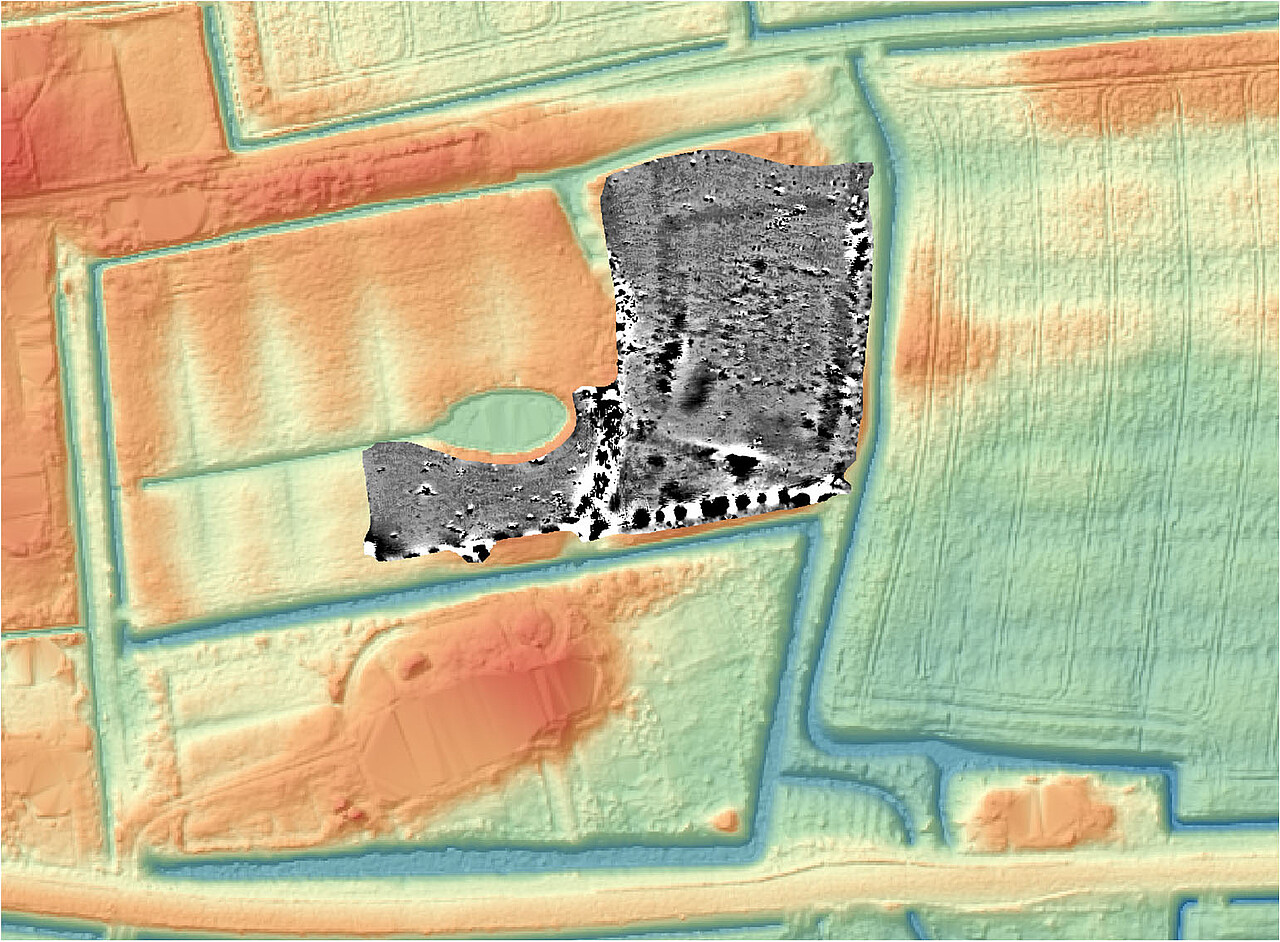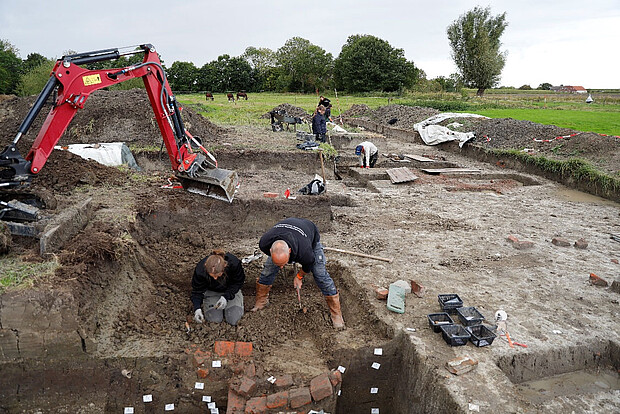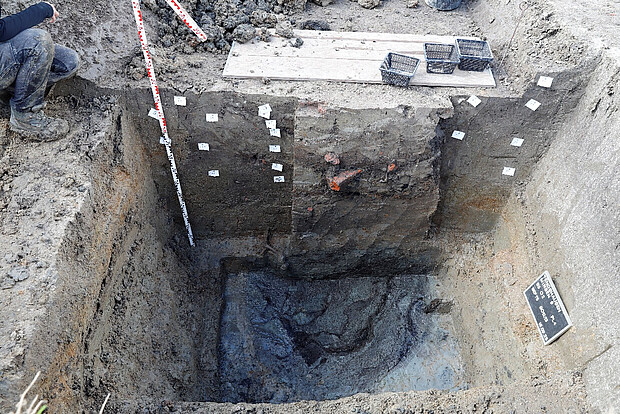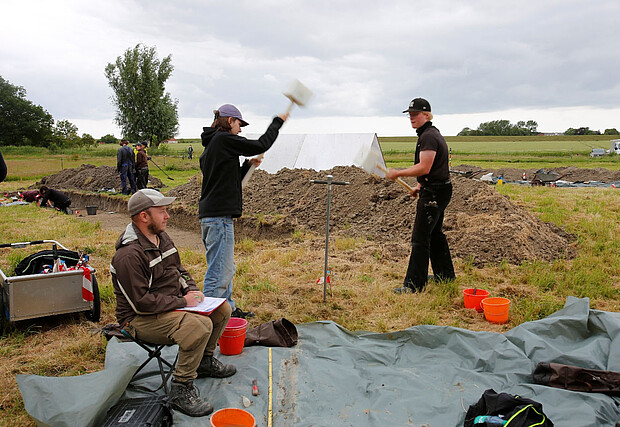
Tengshausen – Interdisciplinary investigations of a medieval chieftain's castle in the Frisian coastal region



The Tengshausen castle site is located just south of today's coastline near Minsen in Wangerland, Friesland district. Basic research and initial prospecting at this site have already been carried out as part of the project “Manifestation of Power – Castle Construction as an Indicator of Social Transformation Processes in the Lower Saxony Coastal Region”. This work made it clear that Tengshausen is characterised by a rich historical tradition and structures that have remained undisturbed for centuries, offering great potential for more detailed investigations. The project, funded by the German Research Foundation, aims to further explore this site using interdisciplinary methods.
In the 14th century, the coastline around the former fortification was threatened by violent storm surges and suffered severe land loss. In the Middle Ages, the Wangerland formed an extensive peninsula bordered by Harle Bay to the west and the Jade estuary to the east. At its northern tip, directly on an old dyke line, was the historically documented residence of the Dure family in the 15th and 16th centuries. Even today, a mound measuring approximately 40 x 60 metres and just under a metre high can still be seen here, along with the remains of an old ditch system.
The Dure family of Tengshausen initially enjoyed great prestige thanks to their close ties to the leading chieftain family of the Jeverland region and were also involved in piracy.
The settlement site with its castle in a special location on the rugged coast and between two old tidal channels was therefore certainly not chosen at random. The site has not been rebuilt since the fortification was destroyed in the 16th century and therefore offers ideal conditions for targeted research. Geomagnetic surveys have revealed details of the buildings and fortifications that are no longer visible above ground. The available historical and geophysical data provide an ideal basis for more in-depth research. Geoinformation-based, geophysical, archaeological and soil science investigations will be used to gather information about the structure and function of this castle site as the property of the late medieval elite in Wangerland in its natural environment. This is also expected to provide significant new insights into castle construction in the context of other coastal regions.
The castle site was investigated during two excavation campaigns in 2025: The NIhK, together with the Jugendbauhütte Niedersachsen, conducted a block seminar in which 24 young participants in the Voluntary Social Year in Monument Preservation were familiarised with archaeological working methods. During this seminar, initial findings were located in excavation sections and in the course of geophysical prospecting, and their function was discussed. Building on this, a summer academy was held in September of that year with specialist students from the Universities of Tübingen and Heidelberg. During this academy, large ditches with complex fillings, brick point foundations and a well were excavated and documented. Numerous finds provide additional insights into the everyday life of the inhabitants at that time. The fieldwork was supervised on site by Stefan Krabath and Thorsten Becker.
Literature:
Becker, T., Dallaserra, D., Hadré, E., Hüser, K. u. Krabath, S., 2021: Archäologische Spurensuche ohne Spatenstich: Von Gräben, Wällen und Backsteinen. Geophysikalische Prospektionen von Häuptlingsburgen der friesischen Halbinsel. Blog für Ost-Friesische Geschichte. Vermittlung und Diskussion historischer Kenntnisse zur ostfriesischen Halbinsel und den angrenzenden Gebieten (https://ostfrhist.hypotheses.org/246.
Jürgens, J. L., 2025: Der verlorene Kampf eines Seeräubers in Friesland. Würzburg.
Krabath, S., Becker, T., Hüser, K. u. König, S., 2022: Gesellschaftlicher Wandel während des Mittelalters im Küstenraum zwischen Weser und Ems – archäologische, siedlungsgeografische und kunsthistorische Aspekte der Elitenbildung. Siedlungs- und Küstenforschung im südlichen Nordseegebiet 45, 167-226.
Salomon, A., 1987: Burgen und Häuptlinge im Wangerland. Jahrbuch der Gesellschaft für bildende Künste und vaterländische Altertümer zu Emden 67, 1987, 38-54.
Salomon, A., 2007: Tengshausen und seine Besitzer vom 16. bis zum 18. Jahrhundert. Historienkalender auf das Jahr 2007, 104-112.
